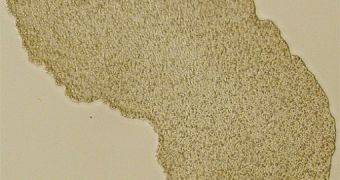A group of amoeba-shaped creatures called Placozoans has recently “dethroned” sea sponges from their position as the closest living creatures to Earth's original animals, the base of the evolutionary tree line, the point of origin for every other animal species that came after it. A new analysis shows that these multi-cellular organisms, which have a very simple construction, might closely resemble the first living creature to emerge from the primordial soup, billions of years ago.
According to the new research, corals, jellyfish, sponges, comb jellies and Placozoans all evolved side-by-side with the higher animals, including flatworms, insects, mollusks and chordates. Chordates are a class of species that include all the creatures that have a backbone, and, therefore, incorporates fish, mammals, primates, and humans.
American Museum of Natural History biologist Rob DeSalle says that the most interesting thing about the new theory is the fact that it would point to nervous systems evolving twice in the history of life on Earth, as evidenced by the fact that the two groups of animals, the lower and the higher ones, both have it. It would have been impossible for nervous systems to form at the time when the two groups of creatures separated. Therefore, they must have evolved afterwards.
This fact carries tremendous implications for evolutionists, who say that this occurrence clearly shows that life on Earth was bound even before it began to become smart.
“Things in organisms that look alike a lot of times aren't really derived from a common ancestor. The nervous system of cnidarians [a lower animal group containing corals, jellyfish and hydras], and Bilateria [a higher animals group containing also humans] are constructed with the same molecules and often times using the same genes. But it is possible that the cnidarians' nervous system really is not the same nervous system found in Bilaterians,” DeSalle explains.
“You see that in other systems and kinds of anatomy – dorsal-ventral polarity in animals, which means having a stomach and back, has evolved twice. It's different in invertebrates and vertebrates. Even if you flip the things upside down, in other words, they are not the same,” he adds. Talking about eyes, he mentions that “They are incredibly complex things, but they have evolved many times [...]; it's not that far-fetched to think that the nervous system would have evolved twice,” he concludes.

 14 DAY TRIAL //
14 DAY TRIAL //